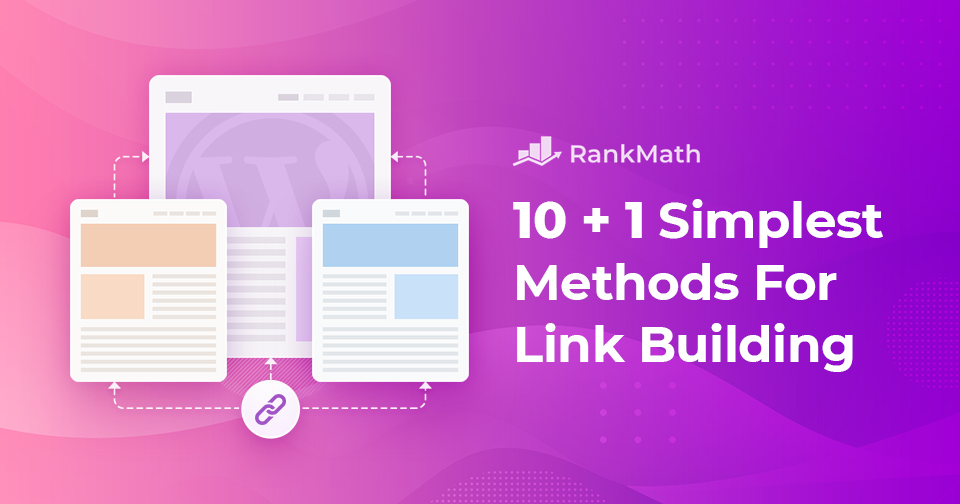Link Building is and has been, the foundation of SEO. SEO itself may have changed over time, but links still play one of the most important roles in helping a site rank.
Like it or not, the Internet (and SEO to some extent) is a popularity contest. And in this contest, the currency is links. Each link that your website gets from another website is like a vote, and the ones who score the most votes win.
But, here’s the thing!
Not all votes are considered equal, and votes from authoritative sources are more valuable than others. Following the same patterns, links from high-authority websites are more valuable than any general link that you get.
Considering that, you would think that all website owners and bloggers would be experts at link-building. Unfortunately, that is not the case. Link building has been hard to do, and it usually gets harder as time passes.
But worry not, you don’t have to be an expert to build links to your website, especially when you use the simple link building methods that we’ve listed below in this guide.

What is Link Building & Why Does It Matter?
Link building is the process of earning new inbound links (backlinks) to a website or particular webpage on a website from other websites or by taking advantage of internal linking opportunities.
The primary goal of most link building efforts tends to be to drive search engine rankings to then increase organic search traffic. However, the links themselves can also be an incredible source of referral traffic, partnerships, brand recognition, and more…
Nofollow vs. Dofollow Links
Let’s kick this off by saying – there’s no such thing as a dofollow link.
They don’t exist but it’s an easy way to refer to a link that simply does not have the rel=nofollow attribute applied to it.
So back to the actual difference between links with the nofollow attribute applied and those without it. In terms of what it looks like – rel=” nofollow” is simply an attribute that can be applied to links which looks like this:
<a href="rankmath.com" rel="nofollow">Rank Math</a>You’ll commonly see this with links from blog comments which generally have this attribute applied automatically. And similarly, in order to comply with Google’s guidelines, any paid links should also have the nofollow attribute applied. The purpose of the nofollow attribute itself being applied to a link is to suggest to search engines not to follow the link so that it should not influence the site’s search engine rankings.
Google has officially stated that it no longer treats “nofollow” attributes as it once used to as it has developed more advanced ways of determining the nature of links. So, while the general consensus is that “dofollow” links are preferred, a great nofollow link may still contribute to rankings and would still be worth it – and more importantly, beyond this, it’s only natural for a site’s backlink profile to have a good mixture of “nofollow” and “dofollow” links.
Without further ado, let’s dive deep into the various link building techniques you can rely on:
Link Building Techniques we’ll cover:
- Find Internal Linking Opportunities
- Get Links from Broken Links on Other Websites
- Get Links By Providing Testimonials
- Create “Link-Worthy” Content (A “Linkable Asset”)
- Create a Community or Contribute to One
- Email Outreach & Building Relationships
- Contribute Your Content & Expertise To Other Websites
- Use Keyword Alerts To Track Mentions (with a twist)
- Get Unbiased Reviews
- Get Links From Copycats
- Keep Content Updated — Always
1 Find Internal Linking Opportunities
One of the hands-down easiest link building opportunities lies on your website. Yes, you read that right.
You can do internal linking on your site, making it a great place to start.
Most websites have money-driving content and other informational content (blog posts, reviews, etc.). The problem is, the number of links to information content far outweighs the links to the money content—even if you intend the opposite.
Internal links come to the rescue!
Note: If you are using Rank Math, you can easily build internal links to your posts with it.
You don’t want to just start linking every page haphazardly. Instead, you need to create some strategy internally for your most linked content to your money-driving pages. That way, you can funnel “link-juice” to the pages that you need to rank the most.
How to Create an Internal Linking Strategy
Step 1: Find Your Pages with External Links
Before you start linking pages to each other, you need to find the pages on your website with the most links from external websites (other websites that link to your pages).
The easiest way to get that information is through Google Search Console. Head over to Google Search Console and open up your property. From the left-side menu, head over to “Links”.
On the page that appears, you will see the 2 sections, External Links and Internal Links. This is the list of pages with the most external and internal links.
Here is how it should look in the new Google Search Console.

Step 2: Evaluate Pages with The Most Links
Take a look at what pages have both the most internal and external links. As you review, you’ll notice that each page may fall into either money-driven or information-driven content.
Right now, though, you’re going to focus on the internal links part of it. Are the pages that have the most internal links the ones you want the most link-juice (i.e. authority and ranking) passed on to?
If not, you’ll want to point out some internal links from the pages that have the most external links. Doing this will pass forward the authority — and likely the ranking — of those pages shoot up.
Step 3: Review and Update Contextual Links
Now that you have passed authority from your highest external linked pages with internal links to the pages you want to start ranking, it’s important to review the content inside the pages you’ve just linked to.
The reason for this is to see if there are other contextual links you can add that relate to that page you’ve just linked to.
For example, if you’ve just linked to a page on your site that covers the topic “Best SEO Tools in 2024” there may be other pages and content on your site that relate to SEO best practices that you could create an internal link to from the above-mentioned page.
This is also a strategic move because it not only passes a bit of that authority to other pages on your site but also helps connect relatable content to build out overall links and structure.
2 Get Links from Broken Links on Other Websites
What is a broken link? It’s essentially a link on a website that no longer goes to a working page.
These happen all the time. Sometimes a landing page that gets linked to no longer exists or the website linked to is no longer in business.
Webmasters and site owners want to provide a great experience to their visitors, and it is in their best interest to fix any broken links since it can impact their SEO.
But, many times, they aren’t able to keep up with reviewing things, and that is where you can swoop in and save the day.
With the steps we’ll give you below, you can find broken links on high-authority websites to allow you to pitch your website and score some links.
How to Attract Links from Site with Broken Links
Step 1: Create a List of the Publications You Want Links From
To find broken links, start with creating a list of publications which you’d like to gain some external links. Whatever industry you’re in, you likely already know the top, high-authority publications in your industry.
Use a tool like Google Sheets or Notion to create a list of all the publications you can think of that relate to your site and have a similar audience. But don’t settle for just the things that come to mind, dig in and do some research and continue to compile your list.
Keep in mind that very popular blogs and sites are hit up a lot and that could make it more difficult to get links from them. We mention that not to say you should shy away from these, but that you should expand your search into other smaller publications too.
If you have the resources, you can also outsource this research to a virtual assistant.
Step 2: Use a tool to check the sites for broken links
Now that you have a list of sites your want to try to get links from, you’ll want to find broken links on those sites. Now, don’t worry. You don’t have to manually go through to try and find that (nobody has time for that).
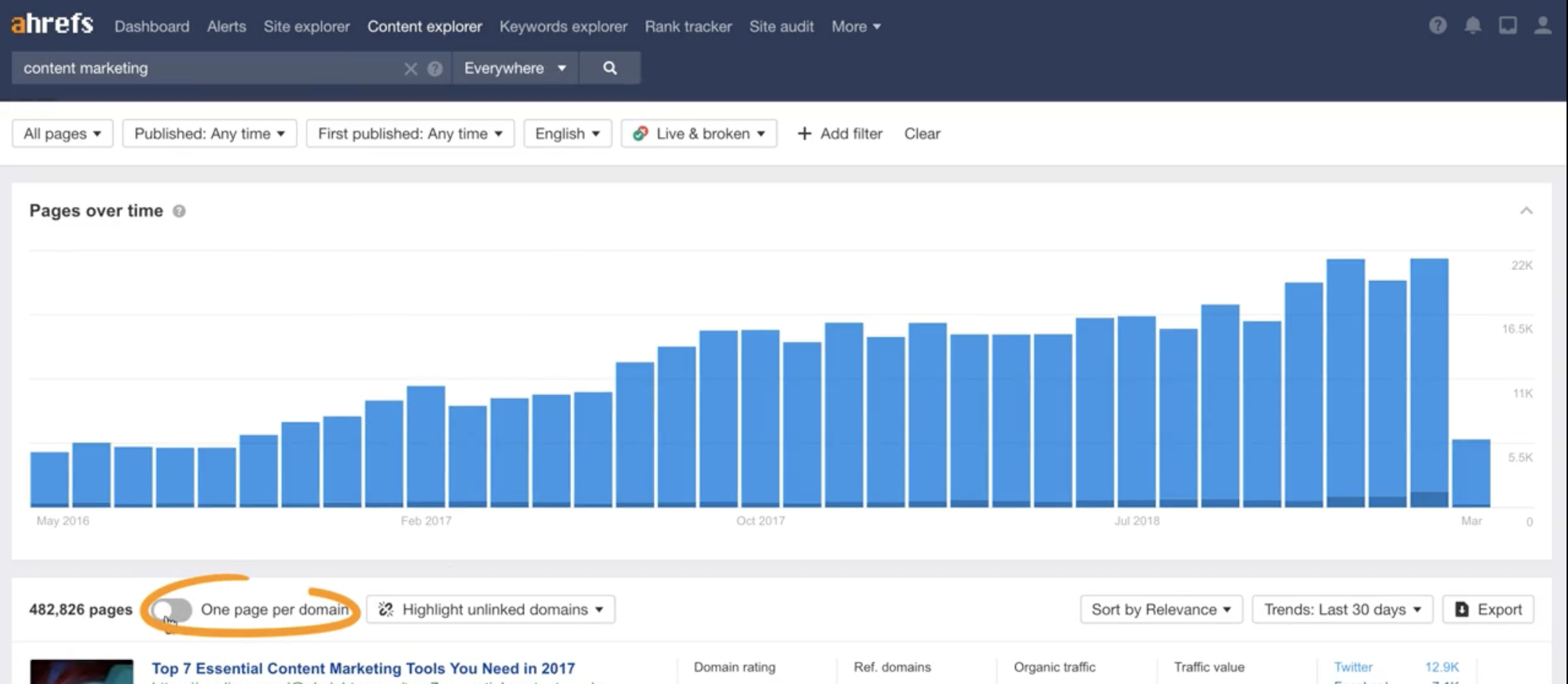
Instead, you can use a broken link checking tool. Here are a few tools worth checking out.
- Deadlinkchecker.com
- Small SEO Tools Broken Link Checker
- BrokenLinkChecker.com
- Ahrefs’ Content Explorer
Step 3: Make a list of the broken links AND the pages that they point to
This is sort of two steps in one, but they go together.
With all the links compiled where you can see they have broken links, go through and look at those links to see what they point to.
What type of content did that link to originally? What is a resource like a blog post? A landing page? A video? What was the format(i.e. educational, sales-related, etc.)?
This is important because you want to understand what the webmaster was willing to link to originally so that you can start formulating ideas for the next step.
Step 4: Create similar resources on your website
Creating resources on your website that are similar to those that another website has linked to could take quite a bit of time.
From a content strategy standpoint, spending time to create resources shouldn’t be done for the sake of just creating the content.
Whatever resource you create should support your current content marketing strategy and hopefully be a resource that can draw in links from multiple places rather than just a few of the places you’ll be asking sites to link to.
Step 5: Reach Out to the Websites and Pitch Your Link Replacement
With your resources in tow, you can now start reaching out to the webmasters and pitching your link as the replacement for the broken link.
You can do this yourself by connecting with the people in charge of that brand on LinkedIn to start building a relationship. This is also an area you can consider outsourcing to a talented virtual assistant or outreach specialist to free up your time.
If you do go about pitching these people yourself, set aside some time to create some pitching templates that you can use again and again to make things go a bit faster.
Start reaching out and connecting with people, then pitch your link replacement.
3 Get Links By Providing Testimonials
An easy way to get some juicy links is to give testimonials.
Many companies have a dedicated testimonials page, while others embed testimonials on their home page and inner pages. To add the cherry on top, they also link out to the bloggers that give them the testimonial—which is what makes this link-building tactic work.
We do this at Rank Math SEO. We have a dedicated reviews page on our website where we link to many of the bloggers that use our products and are kind enough to share their views.
Knowing some companies do this gives you the upper hand in landing a link from a high authority site.
How to Get Backlinks from Websites By Giving Testimonials
Step 1: Make a List of All the Products and Services You Use
Try to keep this centered around the products and services you use for our business. That list could be very different for someone who is a lifestyle blogger to someone who works in marketing and SEO and writes about those things.
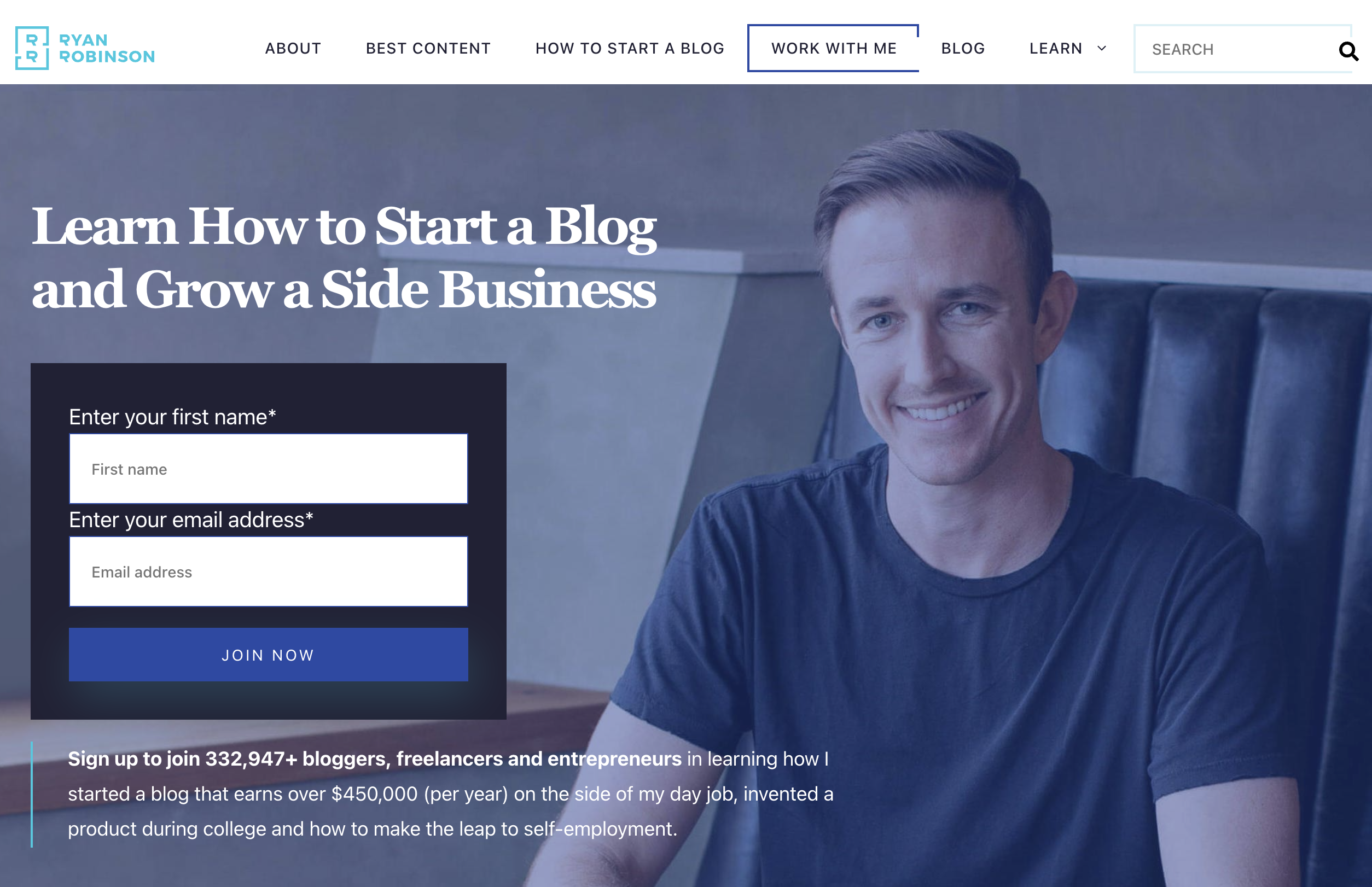
Even if it’s a product you’ve used in the past, be sure to add it to the list so you can jump right into the next part.
Step 2: Gather Contact Info
You likely have quite a few products and services on your list. This is the time you get started on your researching and connecting part of things.
You can usually get on a platform like LinkedIn, Instagram, or Facebook to look up brands and the people who work there.
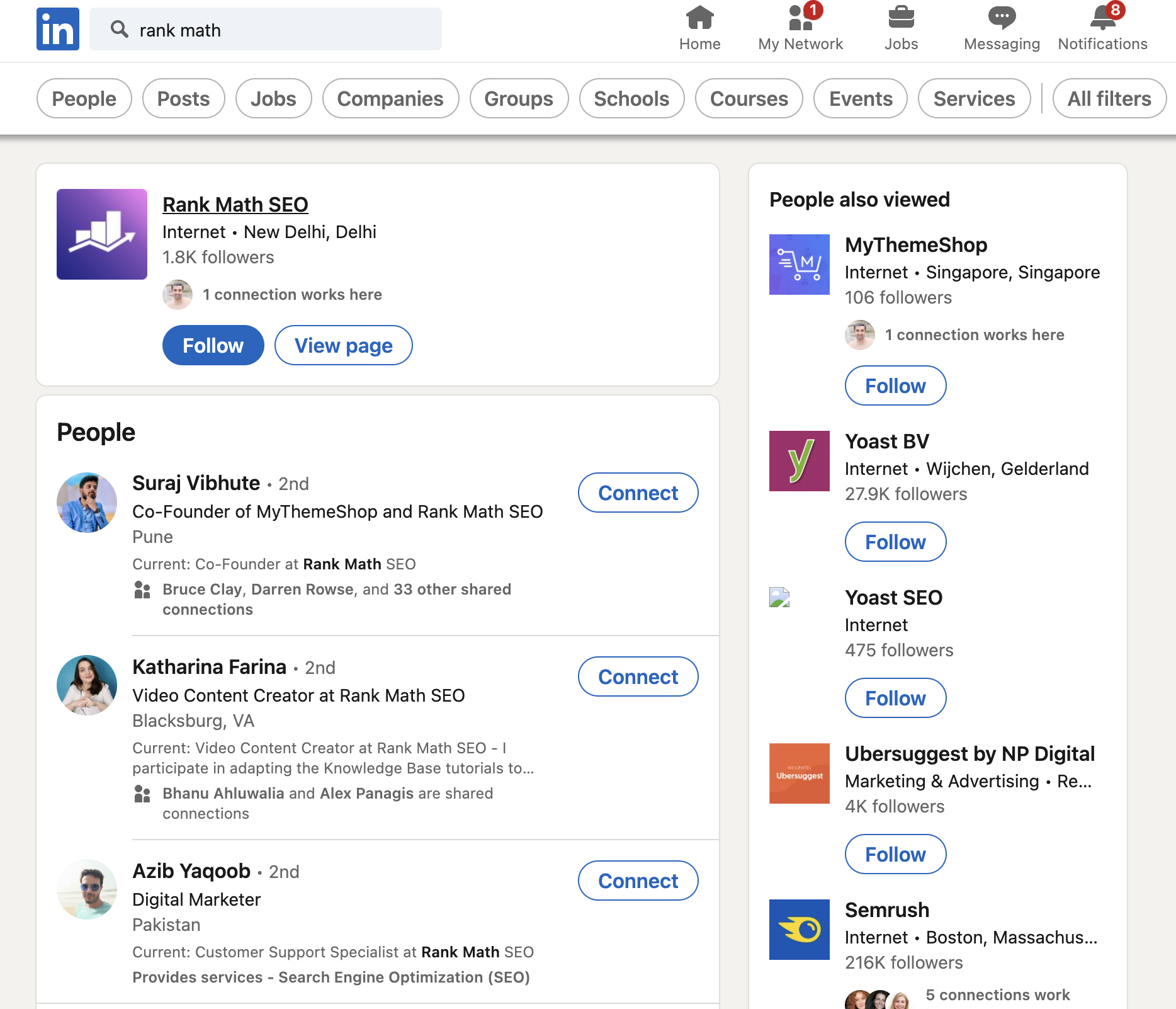
On LinkedIn, you can look up the company that created the products or services you use and see the people who work there. You can start connecting with those who look to be in charge of the website and/or decision-making.
Step 3: Reach Out to Them and Send in Your Testimonial
No matter how you decide to connect with someone, be it by email or a social platform message, be sure to start going down your list and reaching out.
What could you say to make it easier to start a conversation?
Something to the effect of, “Hi, I love product X so much! I use it every day. I wanted to just let you know and hopefully connect and follow the journey”, makes it very easy for the person to accept your connection and for you build out the relationship from there.
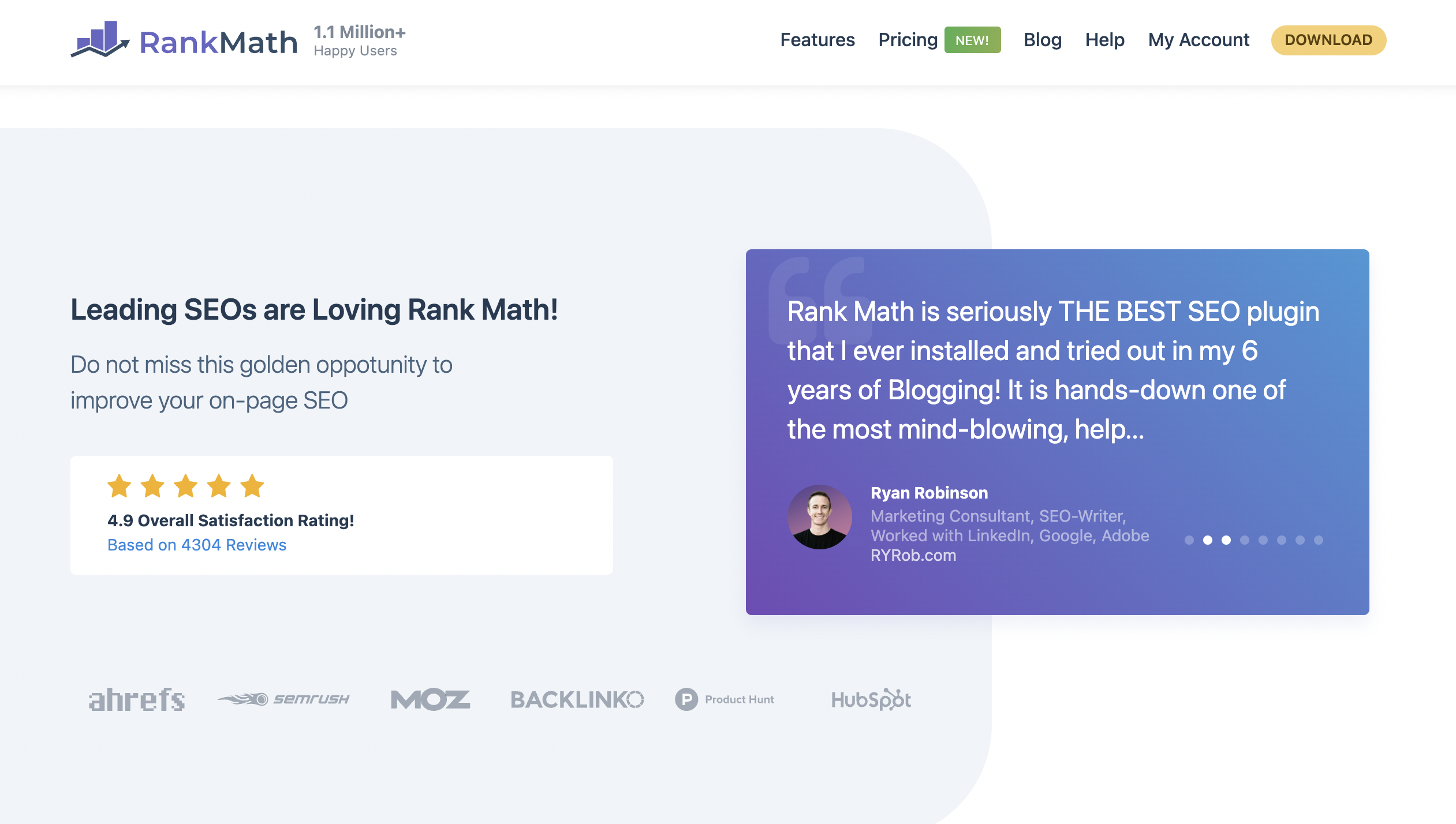
You can also ask them if they have a place on their website where they display testimonials. If they do, tell them that you’d love to share a testimonial for them to use. Usually, webmasters are quick to accept the offer.
There are a few things to remember if you want higher success with this method:
- Make sure that the testimonial is positive. Obviously, most companies will not post a negative testimonial on their website.
- If you’re buying a product or service just so that you can review it and ask for a link, then we would recommend that you actually spend some time using the product and provide an honest testimonial.
- Even if the product owner offers a no-follow link, take it. No-follow links are not useless; they still help in gaining traffic and do affect the perception of your brand (for the people who see your testimonial.)
4 Create “Link-Worthy” Content (A “Linkable Asset”)
4.1 Be the First to Talk About A New Product, Service, or Upcoming Event
There is a reason why most tech bloggers and reviewers review phones as soon as they come out. It offers a huge advantage in terms of reach and gaining links.
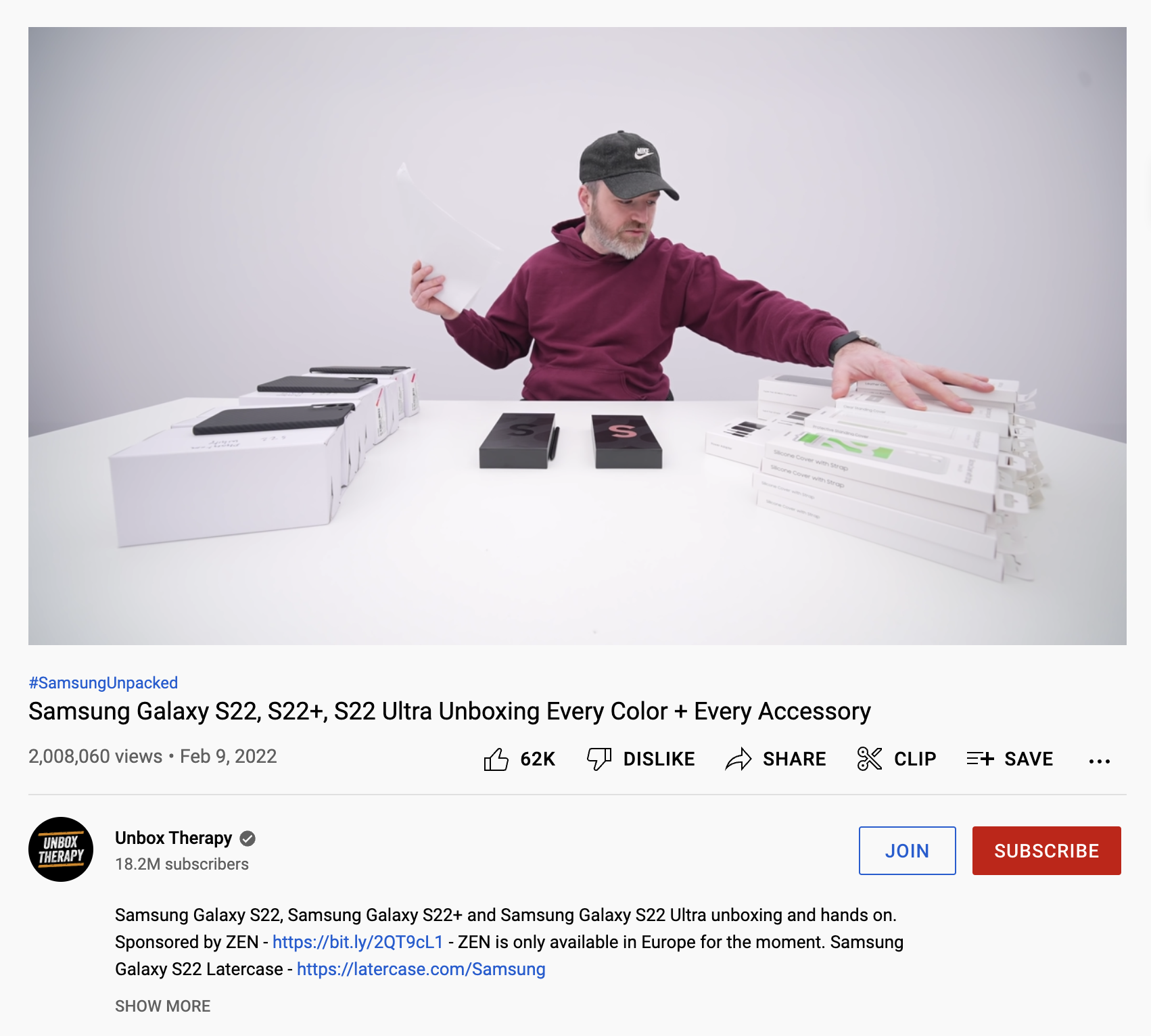
But, this phenomenon is not restricted to technology products and can be leveraged to all kinds of products.
Here is how to execute this link-building strategy.
- Find a newly released product
- Write an in-depth tutorial on the product and publish it on your website
- Promote the tutorial to reach the right people
This strategy might seem easy, but finding the right product is key.
The process of finding new products is relatively easy if the product is digital, as they can be discovered and accessed easily. For physical products, you have to keep your eyes open and conduct regular research to find new products.
Another easy way to build relevant links is to cover events and conduct event round-ups.
Every year, there are many tech events around the world, including the time when the new iPhone is announced. Thousand of tech bloggers, reviewers, and other people cover the event and are mentioned and linked to by the press, and other relevant publications.
You have to do something similar in your niche.
Start by making a list of all the popular events in your niche, and attend (or send someone) the most popular ones. Once you’re there, cover the event in the best way possible (text, audio, video) and also interview people who are attending the event with you.
To increase the chances of scoring some links, it is better that you build ideal relationships before you attend the event. Since most events are time-sensitive, it wouldn’t give you much time to outreach and build relationships.
To counter that, reach out to bloggers and publications who have linked out to similar event coverages, and let them know you’re attending the event. You can also offer each blogger or publication an exclusive scoop of the event to increase your chances even further.
4.2 Quizzes
We’re sure that you’ve seen a lot of people sharing quizzes on Facebook and other social media—everyone has. That’s the power of quizzes, and they are magnets for engagement and links.
This tactic is also niche-dependent, meaning that it’s difficult to do in some industries but can work very well in others. That being said, the general idea is simple:
Create a fun, engaging, and shareable quiz in your niche, and you’re bound to pick up some links.
For example, the popular website Buzzfeed uses a mix of quizzes and a mix of other interactive content to drive millions of visitors to its website. The millions of websites are often accompanied by thousands of links too.
On top of that, their quizzes generate much more traffic than their articles.
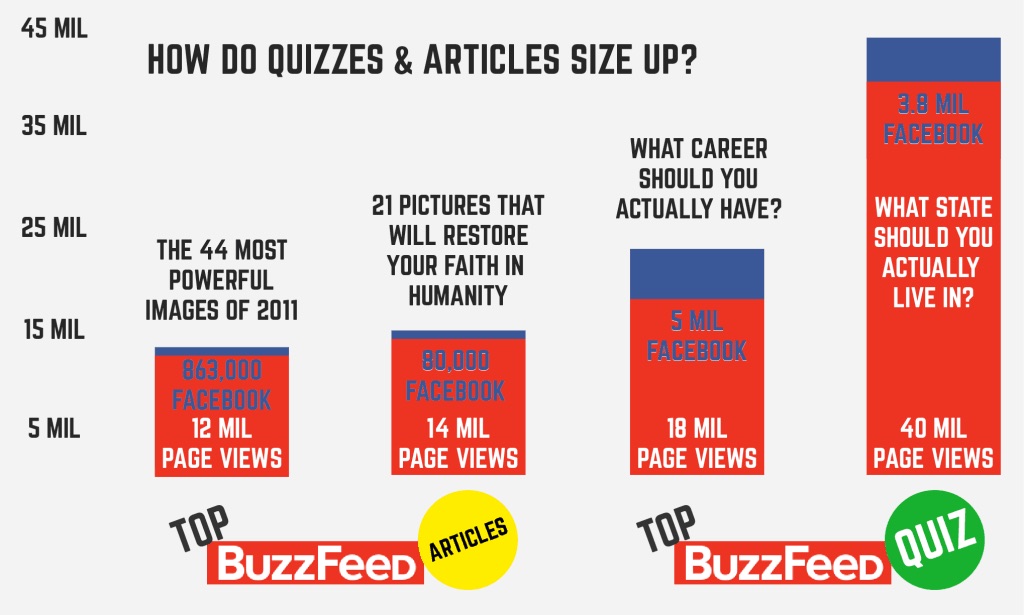
You don’t have to be as big as BuzzFeed to garner links from quizzes. We all love a good quiz, which means your audience will enjoy it as well.
You can use the WP Quiz Plugin to quickly set up and launch a quiz. If you’re unsure how to create a quiz with that plugin, this guide to creating a quiz will be very helpful.
4.3 Coin A New Phrase
One way to ensure that you keep scoring links for a long time is to create a catchy new term.
To give you an example, the term ‘Linkerati’ was coined by Rank Fishkin (ex-CEO of Moz). The term refers to the people who are likely to link to you or your true audience for outreach.
The concept is nothing new in the SEO world, but Rand coined the term, and it’s stuck ever since.

Here are some more terms that were coined (or became popular) in the past few years:
- Skyscraper Technique – Coined by Brian Dean of Backlinko
- 3D Touch – Named after Apple’s integrated display technology
- 10x Content – Another one by Rand Fishkin
- Inbound Marketing – The process was fairly well known, but HubSpot was the first company to use it widely
- The Drafting Technique – Coined by Derek Halpern of Social Triggers
The thought of coining a new phrase might seem intimidating, but it is easier than it sounds.
You can use the “Mush Approach” which is essentially what popular Hollywood couples get with their names with they start dating. It’s taking a couple of words and mushing them together. (Ben Affleck + Jennifer Lopex = Bennifer)
With the example of the “Skyscraper Technique,” Brian Dean essentially expanded on the illustration of building a skyscraper into how that concept relates to content marketing.
The phrase has nothing to do with actual skyscrapers but does present an expectation of what will come out of that phrase. The term by Derek Halpern is similar.
If you’re building off an illustration you can try to wrap that into a new phrase.
4.4 Tutorials
There is a reason “how-to” is one of the most popular phrases on the Internet—people love to learn new stuff. If you know a particular area that other people don’t, you can create content around it that can get a lot of links.
You’ll notice that RankMath has a lot of “how-to” style posts on our blog. Much of what we cover is technical, and our readers generally like simpler step-by-step posts that make it easy for them to DIY the SEO-related issues that come up.
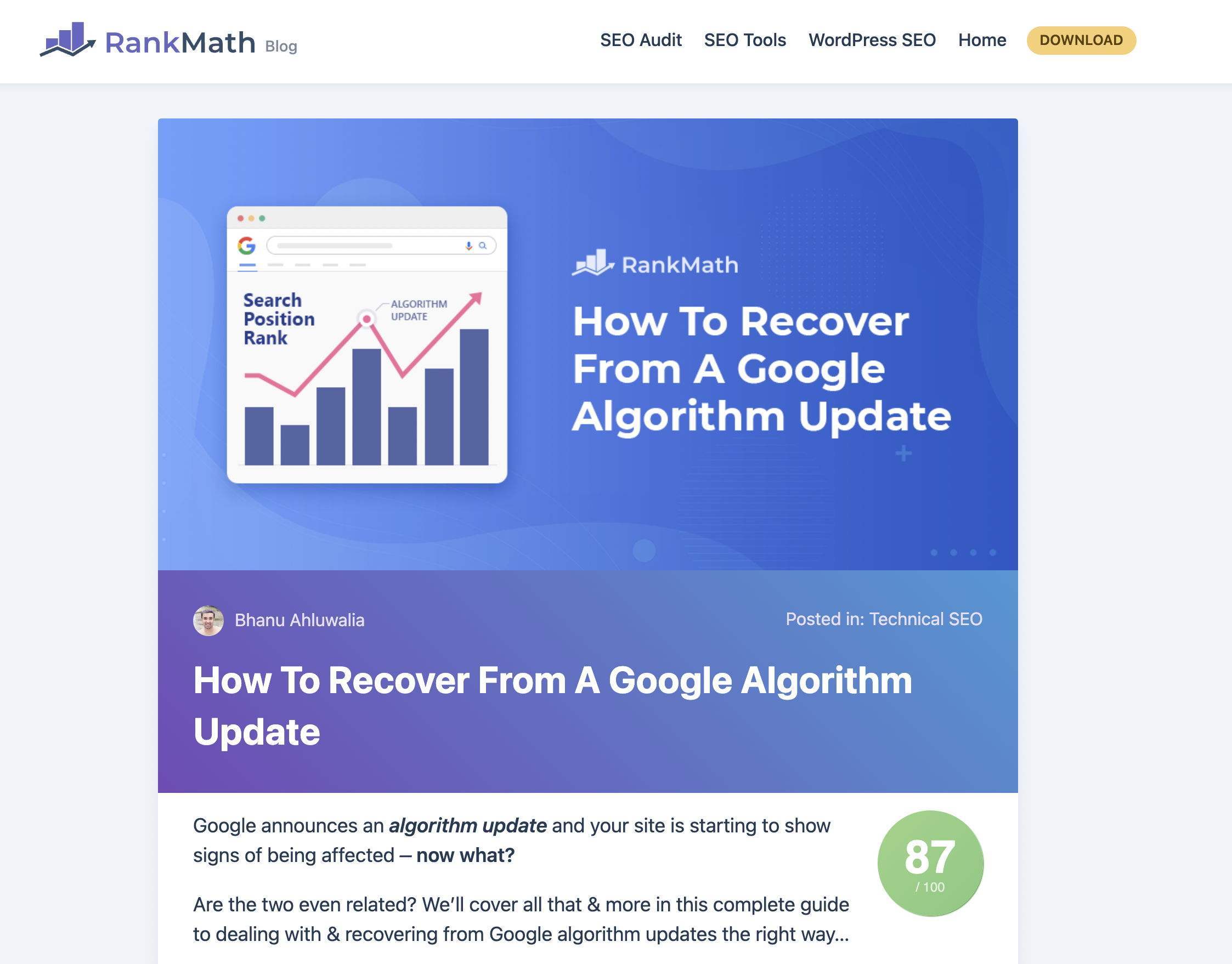
We could spend hours teaching how to put together a tutorial.
To break it down simply, be sure to watch our video about the best SEO tips to help you structure your tutorials better.
4.5 Interview Influencers (Roundups)
There was a time when it seemed like every marketer under the sun was trying to do a roundup post. Even though the fervor has died down a bit, it is still a viable link-building strategy.

You can use this strategy in two ways:
- By being the person being interviewed, or
- By being the person that is conducting the roundup.
How To Get Interviewed for Roundup Posts
While you can’t guarantee you’ll get interviewed for every roundup post that suits your website, you can at least take some easy, but strategic steps to set you up for more opportunities.
- Continue building out your personal brand online. This could mean putting out content outside of your company and becoming a well-known face behind-the-scenes. That content could be with consistent posts on platforms where other influencers spend time.
- Reach out to people who have already conducted a roundup and ask them if they are conducting another one. If not, keep up the relationship so that when they do, you can be a part of it.
You’ll notice that most of these ideas play the long game, but they’re going to help you build the blocks to get to where you want to go. If you’re the one conducting the roundup, the steps to doing so are pretty straightforward.
- Pick an interesting question
- Reach out to influencers asking them their opinion
- Compile the answers into a great looking post
- Promote the heck out of it
That’s pretty much the bare bones of it. But this framework can be tailored to just about every industry.
- Start with the people you know or have a working relationship with. This is low-hanging fruit, and usually easy to get a yes from them.
- Ask them if there is anyone else they know who may want to contribute and get the connection.
- Spread your search into Slack groups, social media channels, and other industry-specific platforms where influencers are known to hang out.
- Generally, people are very flattered and readily willing to contribute, so don’t hold back from asking.
- Keep a list of everyone you asked when you asked, and then be sure to follow up! People are forgetful, and a polite reminder can get you more to add to your round-up.
With all that input, turn it into a great piece of content, then promote it and keep promoting it. Ask those who contributed to share it with their audience.
5 Create a Community or Contribute to One
Forums and communities are breeding grounds for deep discussions on a topic. While the same things can be discussed on Facebook, most people don’t engage in open discussions there due to the public nature of the community.
The advantage of communities (apart from the discussion) is that they attract a lot of links. If you are part of a forum, you can even score links to your website.
But, why not flip the script and create a community of your own? Instead of trying to score a few links from another forum, isn’t it better to naturally attract links by creating your own forum? It definitely is, and here is how you should do it.
- Find the appropriate software/platform to create the community. A great option that a lot of people are comfortable with is Slack.
- Create the community
- Promote the community
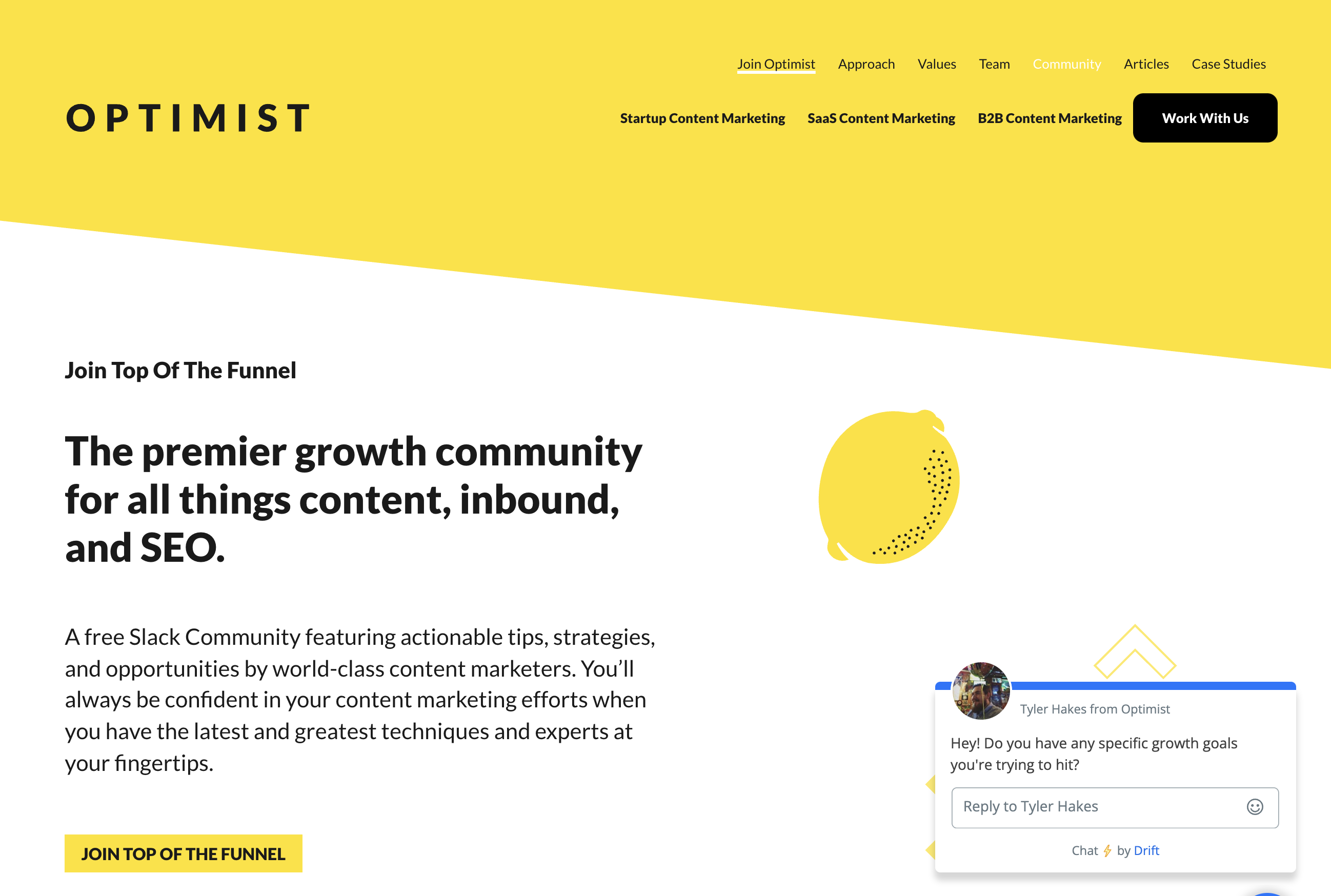
You can see the team over at Optimist did just this. They used Slack to create an online community for like-minded peers to join together and chat about various subjects from everything from work opportunities to content promotion where others can link to your content.
They promote the channel on their website and in their other marketing channels like social and email.
If you don’t want to go the Slack or social media platform route, here are some software options:
- BuddyPress – Forum Software created for WordPress
- VBulletin – A trusted open-source forum software
- Discourse – A modern forum and community software
After you’ve set up the community, the hard part is growing it. It’s a chicken-and-the-egg problem.
People won’t join the forum without good content already being there, and content won’t be created without the people there. To solve this, you have to grind it out and invite people to the forum and participate in each discussion until the forum becomes self-sustained.
Start with those you know in your industry and consider hosting Ask-Me-Anythings (AMAs), where people need to join to participate.
If you want to invite guests for AMAs on your channel and promote that out, it can be a good way to get new people into the community.
If you don’t want to go through the hassle of building this out, consider joining relevant forums and communities in your niche and start contributing to them regularly.
The key words here are contributing and regularly.
Add some value to the community before adding any links, and even after that, add links where they make sense.
You’ll find these forums and other social websites when you search for any questions in your niche. Since forums have tons of discussions, they tend to rank for a lot of long tail keywords. An alternate way to find relevant forums is to use simple search queries. Here are some ideas that you can use.
- keyword + inurl:forum
- keyword + “powered by vBulletin”
- keyword + inurl:discussions
6 Email Outreach & Building Relationships
Email outreach is at the heart of running virtually any successful business.
And, specifically in SEO & content marketing, it’s still the best channel for link building. While engaging with people on social media, connecting with people on LinkedIn, and on other channels are all still worth doing, email is widely accepted as the most professional form of communication to build long-lasting business relationships.
6.1 Find people that are likely to link to you
When looking for opportunities, people generally start with what they want. They start by thinking, “Who do I want to get a link from?” when in reality the first step is finding people that are likely to link to you & be interested in connecting.
The reasons you can come up with to reach out to someone, often referred to as relational anchors will vary based on how long you’ve been in the industry, what your business does, etc. but here are some notable generic examples:
- Reach out to people that you featured/mentioned in your content in the past.
- Reach out to companies whose products you’ve (positively) reviewed/mentioned
- Reach out to someone who you’ve been following from early on (ideally from even before they ran a successful website)
- Reach out to someone who you’d like to feature in your content (this is a great way to kick off a relationship that’ll eventually be reciprocated)
- Reach out to someone whose website you would be able to contribute a really great guest post to (given your industry expertise)
6.2 Find their email address
Now that you have a list of people & companies you want to get in touch with, the next step is figuring our what medium.
We always find email to be the most suitable place for these types of relationships because messaging people on Facebook Messenger or LinkedIn definitely comes across as less professional.
If you want to get in contact with a particular company as opposed to an individual – you’ll first need to figure out who would be the best person for what you’re reaching out about. If you’re looking to contribute a guest post to a SaaS companies blog, you wouldn’t reach out to a C-Level executive and would obviously be better of finding out who runs their marketing so you don’t embarrass yourself by reaching out to the wrong person.
And last but not least – to find the actual email – you can use tools like Hunter or Voila Norbert both of which make it extremely easy to find the email address you’re looking for.
6.3 Send them a personal/direct email
Now that you have the two prerequisites – the reason you’re reaching out & the email address for the people you want to reach out for – it’s time to write the actual email.
In our opinion, the best approach is always sending truly personal/direct emails as opposed to reaching out with a template at scale. While parts of your emails can definitely be formatted similarly to other emails – every email should be unique and it should be obvious to the person receiving the email that you didn’t just copy and paste the email 100s of times, just changing the name. In the vein of Paul Graham’s Do Things That Don’t Scale.

This is an example of an email that earned us a mention for an article we published all about Schema Markup & why you need Rank Math if you run a WordPress site.
It’s worth noting that one of the main reasons this worked is that we didn’t reach out with no effort like everyone else would have (including some big brands that still do this). We didn’t just scrape their data from Ahrefs, find their email address automatically and send them a templated email where just the first name was personalized. we actually spent time on their website, getting to know who they are and whether this is somebody that would be worth reaching out to.
So, no fake flattery. Genuinely showing that we care about them, their content, and in many cases, people who see that you appreciate them are inclined to want to say thank you by featuring your product, service, and/or content.
7 Contribute Your Content & Expertise To Other Websites
Every niche has a few multi-authored publications that publish content from multiple authors. These sites are usually large and have a lot of authority. If you can become a regular contributor to one of those websites, or even get to publish a guest post there, you can get some excellent links back to your website.
Of course, it’s easier said than done. You will need some existing authority in the niche and possibly have a few existing relationships with the contributors to be invited to contribute. Follow these steps.
- Make a list of all the popular publications in your niche and the people who manage and contribute to them
- Review those publications to see if they’re worth your contributing to
- Engage with those publications on social media and start building a relationship
- Ask those you’ve built a relationship with if and how you can contribute (be ready with an idea to pitch)
The exact same strategy was used by Andrew Youderian of eCommerce Fuel to get become a contributor to the Shopify Blog.
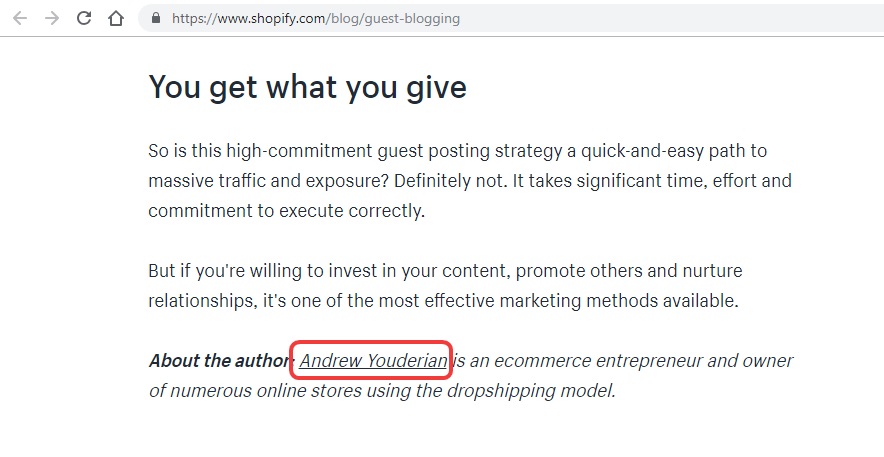
When you try this strategy, you’ll find many websites do not accept regular contributors, and they might turn down your request.
If that happens, worry not, and inquire if they would be happy with a guest post.
You’ll find that many publications that do not accept new contributions will happily accept guest posts if they are high quality.
You can take this strategy one step further by actively looking for websites that accept guest posts. The benefit here is that you’ll find a higher number of websites that are hungry for quality content, and they are also easy to find.
Most websites that accept guest posts also mention it on their website—often via dedicated pages. Use the following search queries to find websites that accept guest posts in your niche.
- “keyword” + write for us
- “keyword” + contribute a post
- “keyword” + submit a post
- “keyword” + guest posts accepted
- “keyword” + this post was contributed by
- “keyword” + guest post by
- “keyword” + work with us
There are plenty of other search queries, but using just these will give you plenty of opportunities to go after.
However, guest posting for links is a cause of concern for Google as it results in unnatural links. Ensure that when you link to your site from a guest post, the link should be set to no-follow.
We recommend that you follow Google’s recommendations so as not to harm SEO. You can focus on creating quality content that is relevant to your audience and avoid publishing the same post on multiple resources.
8 Use Keyword Alerts To Track Mentions (with a twist)
An obvious strategy to gain links is to keep a lookout for mentions of your brand and turn them into links. But, a great twist on that strategy is to do the same thing for your competitor’s mentions.
The idea behind this strategy is simple. If someone is talking about your direct competitor, then they also might be interested in talking about you,(with some exceptions like support problems, or other negative rants).
By keeping an eye out for the brand mentions of your competition, you can connect with the people who have the potential to link to you.
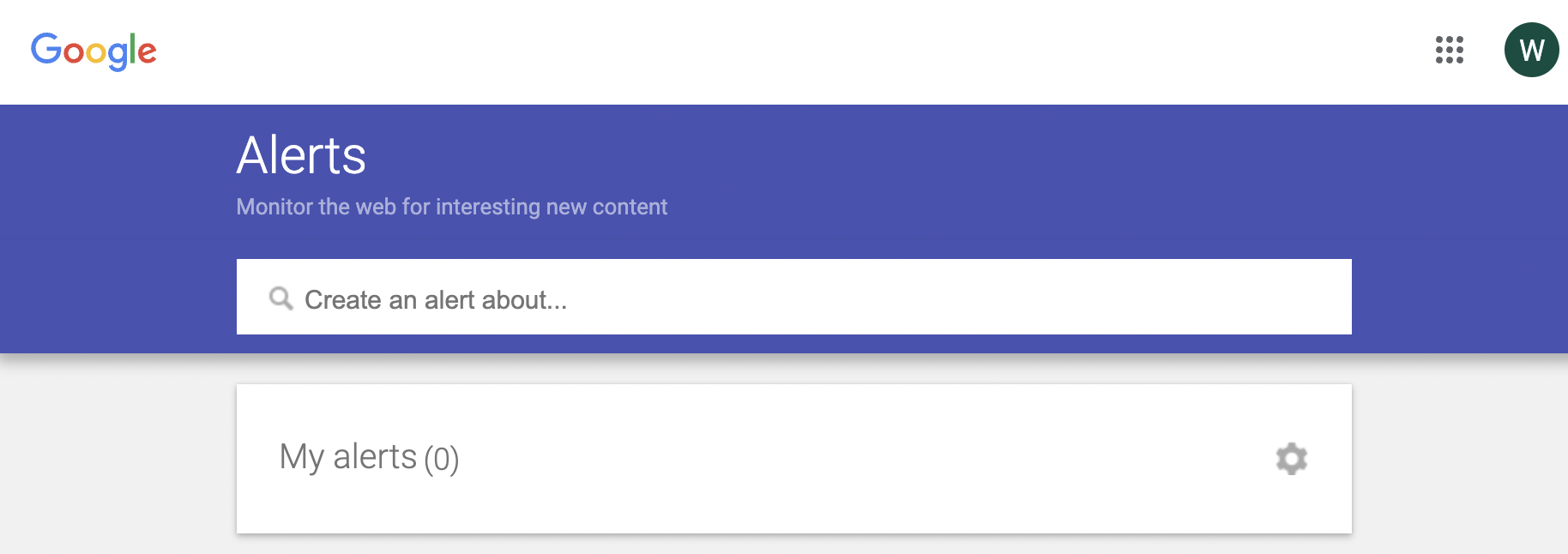
- Sign up for Google Alerts or a competing service
- Enter relevant keywords to monitor.
- When you catch a mention, reach out to the webmaster and initiate a conversation to build a relationship.
- Pitch them for a link when you see fit.
It’s really just that simple!
9 Get Unbiased Reviews
Everyone loves free stuff, especially bloggers.
If you have any course, software, product, ebook, or service for sale, you can use why not giveaway some of them to bloggers in exchange for a review on their website? Doing so will help build some excellent links to your website. Obviously, you’ll need to be open to these being honest which could mean some lackluster feedback, but that’s also to your benefit as you can help you better what you’re selling in general
How To Get Others To Write Reviews About You and Give You Backlinks
- Search for relevant keywords in Google. By “relevant keywords” we mean keywords that would help you find people relevant to your niche and willing to write about you.
- Make a list of bloggers and website owners that appear in the results. Try to narrow in on those that have your ideal audience.
- Contact them and offer your product to them free of charge.
- If they agree, send them the product. If you don’t see a review pop up in the next few weeks don’t run to ask for one since that can get you in trouble. But you can follow up and ask them if they enjoyed the product and keep the conversation going. Many people will feel a sense of obligation without you blatantly asking for something in return.
- Watch the links roll in, hopefully.
The steps are pretty simple, but there is one catch. Google’s terms explicitly say that links from any giveaways on sponsored reviews should be no-follow. And yes, offering money or a product in exchange for the link is a no-no and considered a violation that will get you in trouble.
That is why we would recommend that you don’t explicitly ask for links, since most bloggers will be happy to link to you if your product is good in the first place.
There’s a chance you’ll get a few no-follow links with this tactic, but it is still worth pursuing. Because, if you selected some excellent blogs, to begin with then these blogs should have what you are ultimately aiming for—the ideal audience.
So, even if the link you get is no-follow, the referral traffic should be more than useful to you.
10 Get Links From Copycats
82% of all sharing on the web happens via copying and pasting. Most of your users might copy content to share, but some malicious might copy content to paste it on their own sites, and hope to steal some traffic from you. Wouldn’t it be nice to flip the script on those people and get links from them instead? With this neat little trick, you can.
Simply add the following code to your functions.php file by navigating to Appearance → Theme File Editor.
function add_copyright_text() {
if (is_single()) { ?>
<script type='text/javascript'>
function addLink() {
if (
window.getSelection().containsNode(
document.getElementsByClassName('entry-content')[0], true)) {
var body_element = document.getElementsByTagName('body')[0];
var selection;
selection = window.getSelection();
var oldselection = selection
var pagelink = "<br /><br /> Read more at Yourwebsite: <?php the_title(); ?> <a href='<?php echo wp_get_shortlink(get_the_ID()); ?>'><?php echo wp_get_shortlink(get_the_ID()); ?></a>"; //Change this if you like
var copy_text = selection + pagelink;
var new_div = document.createElement('div');
new_div.style.left='-99999px';
new_div.style.position='absolute';
body_element.appendChild(new_div );
new_div.innerHTML = copy_text ;
selection.selectAllChildren(new_div );
window.setTimeout(function() {
body_element.removeChild(new_div );
},0);
}
}
document.oncopy = addLink;
</script>
<?php
}
}
add_action( 'wp_head', 'add_copyright_text');Make sure to replace “Yourwebsite” with the actual name of your website.
Once you add this code to your website, it will add a link saying “Read more at Yourwebsite” to the content, and anyone copying your content will ultimately add a link to your website as well.
If you’re not comfortable editing your theme’s file, you can follow our tutorial that walks you through what to do.
11 Keep Content Updated — Always
An easy way to get links and continuously get links over time is always to keep your content updated. A surprising amount of content goes stale every day, and a lot of that content has links pointing toward it.
When a piece of content goes outdated, it will stop attracting new links to it. Therefore, always keep your content up to date to attract the most amount of links.
That’s how Brian Dean of Backlinko continuously attracts links. Not only the content he publishes top-notch and link-worthy, but he always keeps his content up to date. That ensures that his content continues to attract links.
Use the same tactics on your website, and always keep your content up to date. As a bonus, you can follow our complete content optimization guide which will perfectly optimize your content for search engines.
Conclusion
Link building has been and will remain the basis of SEO and traffic for the foreseeable future. While link building keeps becoming tougher by the day, the principles behind link building remain the same.
By keeping your creativity high and following the easy link building steps that we mentioned, you will be able to naturally earn links for your website.
If you enjoyed this post, don’t forget to share your feedback with us—we’d love to hear it. Feel free to Tweet us @rankmathseo. Also, don’t forget to mention which of these tactics you liked the most. If you have a link building tactic in your arsenal that we didn’t mention here, we would love to hear that too.
